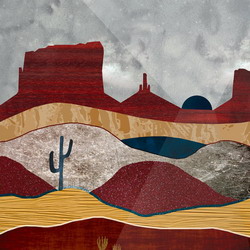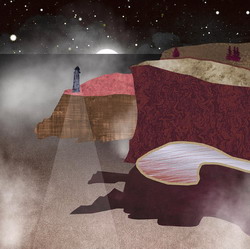What’s the Economic Vitality Of Your Home County?
The folks at the Hamilton Project have done it again with a great financial mapping resource. I highlighted a slick tool from them last year that maps out salary data for 320 different occupations across the country. Now they have a tool that measures a county’s economic vitality based on certain key indicators.
The HP folks looked at key factors concerning economic vitality and well-being for all 3000+ counties and jurisdictions in America and weighted them according to a special index. The tool is here.
The index measure is called “confirmatory factor analysis” and they used the following factors and weights in their analysis:
- Median household income (45 percent)
- Poverty rate (24 percent)
- Life expectancy (13 percent)
- Prime-age employment-to-population ratio (9 percent)
- Housing vacancy rate (5 percent)
- Unemployment rate (4 percent)
It’s a very simple interface and an easy tool to use. The colors of counties range from blue to yellow. Blue counties have higher vitality scores and yellow counties have lower scores.
They also shade the blues and yellows by darkness according to the population of each county. Darker counties of each respective color have higher populations. This is my one minor criticism of the map. Clearly and eloquently showing the right amount of information using colors on a map is an art. And I say that as a trained cartographer.
It can be a bit confusing trying to decipher which category a particular county falls in on their map because the varying tones of the same color often look similar to other color categories. But that’s a minor squabble.
Once you zoom to a state you can float your mouse over a county and the name and vitality score pop up. If you click on the county the expanded data fills in the boxed chart above the map. Here’s the data and score for Loudoun County Virginia, the county with the highest median household income in America:
Also notice Baltimore City on that map above. It’s in the worst yellow category, surrounded by counties on the good side of vitality. Baltimore is my hometown and I’ve written about it often. Poor Baltimore just can’t help itself, it’s a really troubled city. Yet it has opportunity all around it.
The data that feed the map come from the U.S. Census Bureau’s American Community Survey, 2013–17 and the Institute for Health Metrics and Evaluation, 2014. If you want to really geek out behind the analysis there’s a 28 page research paper that goes with it. I may or may not have read it 😉 I’m a dork and love this stuff. I think I should have been a sociology professor.
But for you other dorks out there, and I mean that in the best way, if you check out the paper you’ll see tons of dorky-cool charts, maps, and graphs like this one that shows the change in vitality for some key American cities from 1980 – 2016:
On the left you see 5 rust belt cities that have all gotten worse since 1980. Although Pittsburgh is making great progress on transforming into a new city.
And on the right you see 4 cities that have taken off into the stratosphere since 1980. I live near Washington D.C. and young folks have no idea how different it was in the 80’s and 90’s. Back then D.C. was synonymous with tons of crime and murders, huge swaths of derelict building and lots, and being economically downtrodden. It’s now almost fully gentrified and a completely different place. It’s rich, young, and expensive as all get-out.
Geoarbitrage
Geoarbitrage is a viable and popular tool for those seeking financial independence. So if you’re considering a move to another part of the country, the Hamilton Project Vitality Map can surely help you gauge the basics of any prospective destination.
I’ve done lots of other geographic-based posts showing various aspects of money and finance from a location perspective. Be sure to check out my Geoarbitrage Resources Page that has tons of great tools to help you find your perfect location.
I hope you find this resource handy and I will continue to expose valuable resources that can help when deciding on a geoarbitrage strategy.
Your turn readers – is your home county or city a shade of blue or yellow? Comment below!












































Interesting. It actually surprised me as my county (and majority of state) is yellow with the only blue in the biggest city. Usually in your previous color maps, the entire state does well so it was a bit unexpected.
Data always reveals unexpected things!
Where do you FIND this stuff? What a cool map! My county in the North GA mountains is light orange, driven by the remnants of Appalachia influence. Ironically, it’s becoming a retirement hot spot, and is starting to boom. Interesting stuff, thanks for sharing!
Well, when your career is in mapping technologies like mine is you tend to have your RSS feeds dominated by map-geek stuff. It finds me 🙂
And yes Appalachia is actually the poorest area of the entire US, so the influence is real
That’s a really cool tool. My county (Portland, OR) is 0.0145. Basically, the same as national. That’s very interesting.
As expected, the only bluish clump is around Portland. The rest of OR is yellow except Deshute county.
I’ll check out a few other counties where I lived previously.
Glad you like it, I actually thought Portland would be higher.
our county is somewhere in the middle. it really is a city of have’s and have-not’s so i’m not too surprised by that. i would only have to ride my bike a couple of miles to be in the middle of an area i wouldn’t like.
But if you did ride your bike into trouble, knowing how fast you can run it’d better if you ditch the bike and run out of it…
Wow, you are a trained cartographer? That’s retro cool like having hidden blacksmith or cooper skills. This is an interesting tool and I like how it starts to look more broad about quality of life than just salary alone. I have recently been reading and writing a bit on Happiness Economics and this tool fits into that interest for me. Thanks
I am indeed, we’re a special breed, but blacksmith sounds cooler to me 🙂 Glad you liked the post!
Very cool map. SF Bay Area is super blue. Since median household income is heavily weighted, that’s no surprise.
Yep, no surprises there Doc!
This is a very useful tool Dave! Thanks for bringing it to my attention! It’ll be useful on our hunt for a new home!
Cool, glad it can help you Tako!
My county San Diego is blue. Yay! But I’m not sure if it’s a city people would tend to geoarbitrage to. The cost of living is so high.
Not as bad as DC – I love San Diego!
Wow. I’m both surprised and not surprised by Philadelphia’s numbers. Center City and the surrounding neighborhoods are certainly affluent, which makes it easy to forget how many people in this great city live below the poverty line, but the employment rate among the work-able age range is staggeringly low – and frightening!
In comparison, my home county (not Philadelphia) provides an interesting picture too. Much of the county is fairly affluent to obscenely wealthy, yet my hometown is well below the medians represented within each category listed in this tool. It’s doesn’t surprise me since I’ve lived in both the less affluent and extremely affluent areas of my home county, but it’s still unsettling to see actual numbers.
Sounds like you like maps too…. map geeks unite!
Total map geek here! I used to play with my dad’s atlases all the time as a kid.
Wow – I’m surprised New York County, NY is only 2nd tier at .71. I’m even more surprised Kings County, NY (Brooklyn) is in the 2nd to last tier at -.45.
This tells me it is a good time to invest in Brooklyn. Brooklyn has a lot way to go to catch up to Manhattan and can present some interesting upside potential.
Yeah this tool can definitely tip you off to possible paces to invest in for sure!
Nice find! This is a pretty cool tool and validates a recent move I made from the South (-.1673) to a small New England town (.1165). I moved up a full tier! Heading in the right direction! Will definitely bookmark this for the next time I relocate! Could be a good thing to share with recent college grads! Cheers!
Cool, glad you found it helpful!
Dark blue, but I knew that before clicking on it 😉
Nostra-mapus!
My count is -.0207, so at least we’re not too far down? I suppose I shouldn’t be surprised that Arizona isn’t exactly thriving, but allegedly a bunch of tech companies moved in and are boosting things up (or they’re boosting rents, anyway), so I was a tad surprised we weren’t in the positive.
That’s not too bad at all
The data used to generate this map is quite misleading. 69% of the “Vitality Score” is based on Income and Poverty Rate, while cost of living isn’t even taken into account. It’s self-evident that incomes will be higher in expensive cities with high taxes, and obviously the poverty rate will be lower as the ‘working poor’ are pushed into less expensive surrounding areas.
Any metric that fails to take cost of living into account is pretty meaningless. What good does it do to starve on a $200,000 salary in San Francisco when you can live like a king on less than half that in many very nice regions of the country?
Is that really economic “Vitality”?
Ironically, for those who aspire to FIRE (who can choose to live ANYWHERE) those dark blue regions are exactly the places to AVOID (unless you truly have a huge nest egg). Instead, move to a yellowish region with the weather/activities/culture you desire where your assets are sufficient to purchase your desired lifestyle.
Remember, it’s not how much you make, it’s how much you keep (after expenses) that matters.
I quote Mr. Micawber:
“Annual income twenty pounds, annual expenditure nineteen pounds, nineteen and six, result happiness. Annual income twenty pounds, annual expenditure twenty pounds ought and six, result misery.”
They address your concern in the paper I linked to:
“It would be reasonable to adjust median household income for cost of living, but we opted to not do this for two reasons. First, cost-of-living estimates that are comparable across places are not available for 1980. Second, cost of living may vary for reasons that are directly related to the county vitality we seek to measure. For example, a place with stronger labor demand or better local public goods could attract in-migration that contributes to higher housing prices. Finally, cost of living may reflect the amenity value of a place, and not simply inflated prices for the same goods and services.”
So,… they addressed it by choosing NOT to address it.
I appreciate that young professionals hoping to FIRE may want to know where they can earn the highest salaries while they live in abject frugality, but for anyone looking for a place to actually FIRE to, cost of living is probably the MOST important metric.
The tool is called “Economic vitality” of an area. So an area with tons of GDP production (especially per capita as you referenced in SF) has high economic vitality. To be fair to them, they didn’t call the tool “Economic affordability” of an area.
I agree with you COL is of course important when deciding whether to choose an area to live in. And there are tons of tools out there that do that as well. A thorough analysis of an area would use multiple tools and there are some good ones I have posted about.